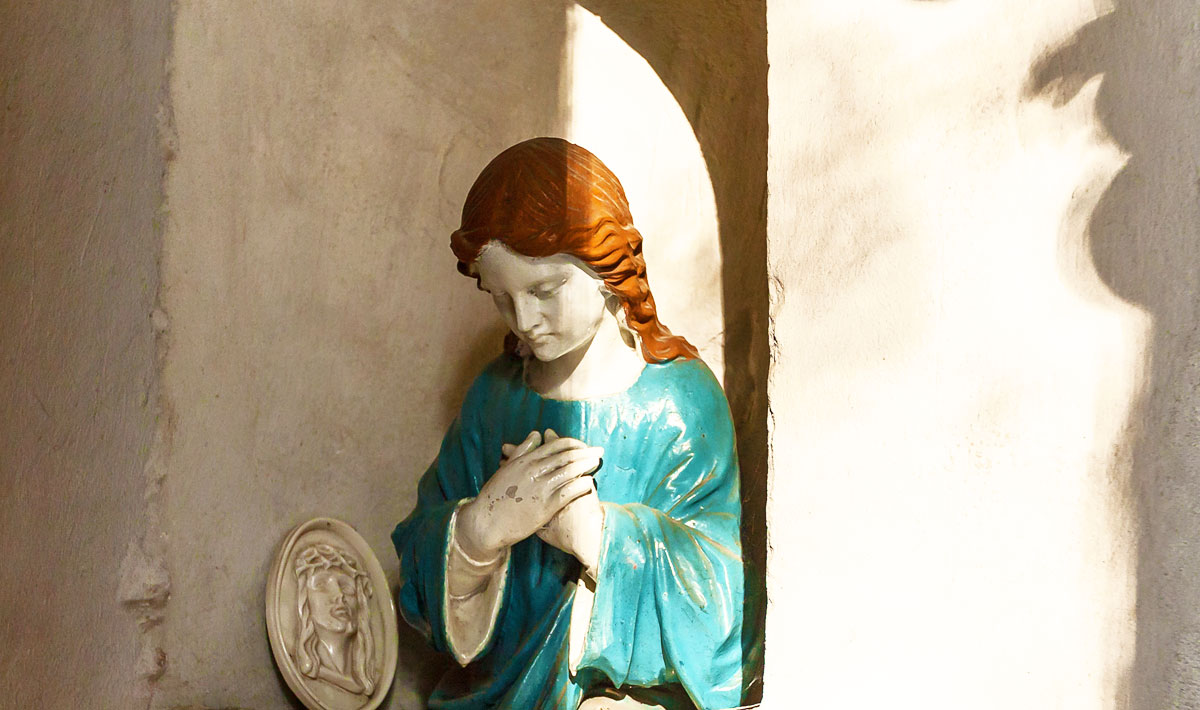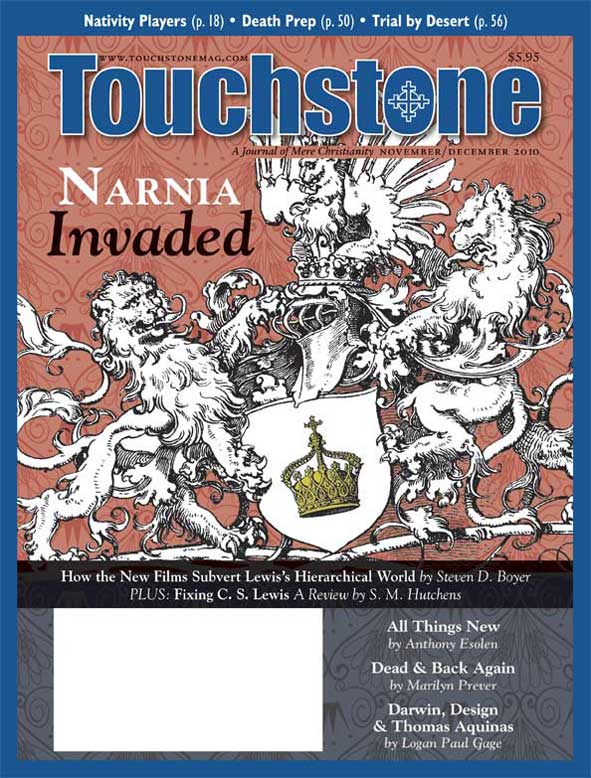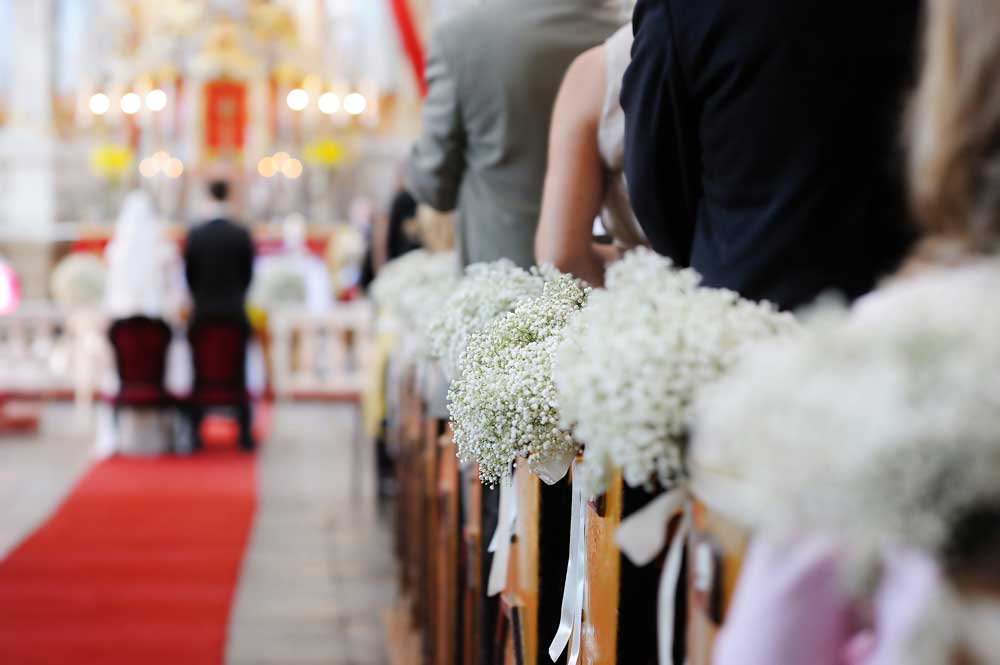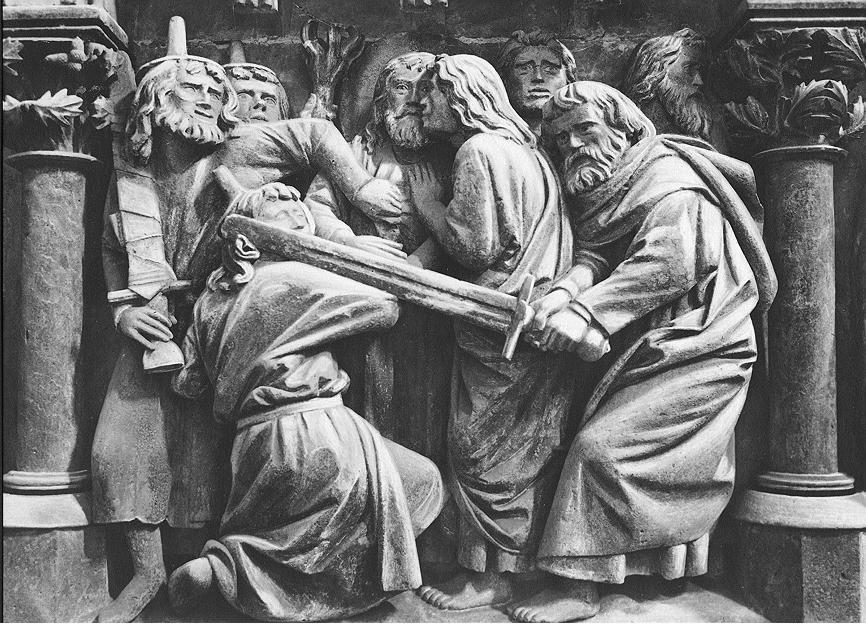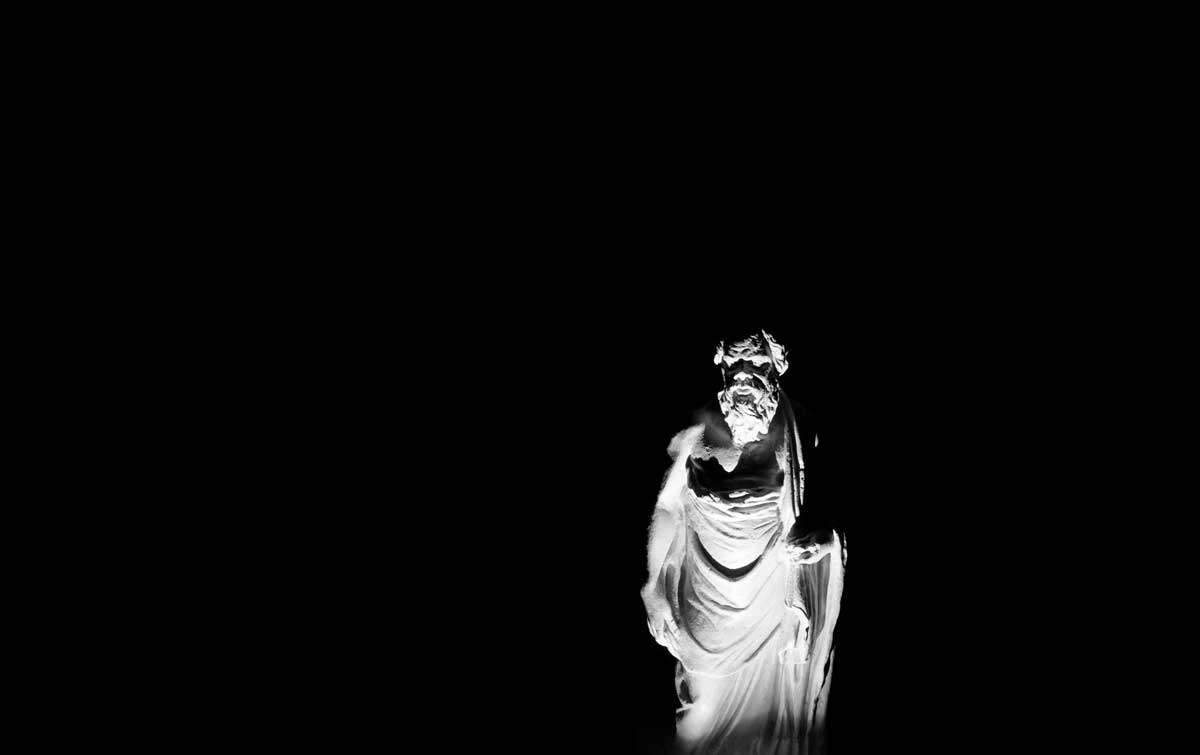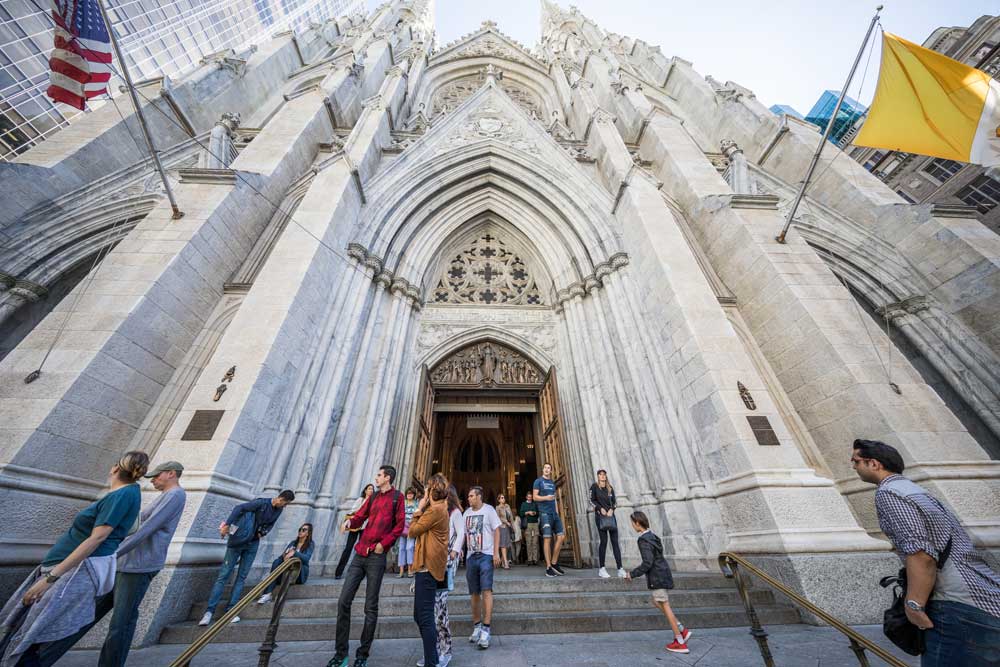View
The Sacred Feminine
Robert Hart on the Incarnation & the Ordained Ministry
In 1995, at an art museum in Chicago, I saw an archaeological find: several identical little statuettes of a woman’s body, from the neck down to the mons pubis. A modern Westerner might assume that the ancient, mostly forgotten people who carved these figures were obsessed with sex and had produced pornography, but this would say more about the modern Westerner than about those ancient people.
The fact is, the statuettes were found in graves. Since they showed the part of a woman’s body most clearly identified with bearing, birthing, and nourishing children, the most logical conclusion is that they were buried with the dead to help assure the safe delivery of the departed spirit into another world. There, the dead would be reborn and nourished.
If this interpretation is correct, it shows that these ancient pagans had a clearer understanding of the sacredness of the feminine than do modern theologians who want to convert the Church into a religion with a Divine Feminine or use inclusive language for God. For these ancient statuettes suggest, however dimly and remotely, the ministry of the Church in its role of administering, as well as proclaiming, salvation.
Christians do not worship a goddess. But it is not an accident or mere coincidence that two things we see in our day—women trying to fulfill the role of the ordained ministry, and women (and men) promoting the new “Feminist Theology” of goddess worship, which is meant to overtake and replace the worship of the Father, Son, and Holy Spirit (“ He, the Spirit of Truth”; John 16:13)—have come together in time, and among the same church bodies and movements.
Necessary Distinctions
Christianity has no room for a Divine Feminine, that is, a goddess, because of the mystery of the Incarnation, the central doctrine of the Christian faith. In chapter 5 of his book Whatever Happened to the Human Mind, Eric L. Mascall writes:
It was male human nature that the Son of God united to his divine person; it was a female human person who was chosen to be his mother. In no woman has human nature been raised to the dignity which it possesses in Jesus of Nazareth, but to no male person has there been given a dignity comparable to that which Mary enjoys as Theotokos, a dignity which, in the words of the Eastern liturgy, makes her “more honourable than the cherubim and beyond comparison more glorious than the seraphim.” . . . The centrality of womanhood in redemption is shown by the fact that the Incarnation itself waited for the courageous and obedient Fiat of Mary (Luke 1:38).
Redemption cannot be separated from the feminine presence of Mary, the only human person to share in the miracle of the Incarnation with Jesus Christ. In fact, we speak here not simply of a feminine presence, but of a female presence. This distinction is necessary in order to clarify its significance to an age that confuses the meanings of the words “sex” and “gender.”
People come in two sexes, male and female, rather than in genders. The Mother of God is a woman. However, the Church is not a woman, but it is the Bride of Christ and, as such, is of the feminine gender, though not of the female sex. Jesus is a Man, a member of the male sex in his human nature. But as God, he is of the masculine gender, together with the Father and the Holy Ghost. God, speaking strictly of the Divine Nature shared by the three Persons of the Trinity, is (as stated in Article I of the Anglican Thirty-Nine Articles) “without body, parts or passions.”
It is necessary to distinguish between the two natures of Christ: the divine nature that is proper to his Divine Person as one with the Father, and the human nature that has been taken into the Divine Person of the Logos. The latter is an alien nature, that is, a created nature taken into the uncreated Person of the Logos, a physical nature taken into a nature of Spirit (though separate and distinct in nature from every created spirit), and a nature fixed in time taken into eternity.
The Female & Feminine in Redemption
Our redemption necessitates this deifying grace: “The Word was made flesh and dwelt among us, and we beheld his glory. . . .” Clearly revealed from the beginning, and more clearly revealed by the naming of God as “Father” by Jesus Christ, God is masculine in gender. This makes the creation, and the human race in particular, feminine in relation to him. Our redemption was not accomplished without the Son of God appearing in the material world by assuming our nature, and this required both the female sex and the feminine gender.
The Blessed Virgin Mary was the woman, the new Eve, the mother of a new humanity in the Last Adam, Jesus Christ, in whom all are made alive. The female sex was necessary for our salvation, since the redemption that has been revealed by God is not merely a spiritual idea supported by speculation, but a real-life drama that involved everything that was part of the life lived among us by Christ, including the Cross and the Resurrection. This required the Incarnation; it required a womb.
Furthermore, the Church provides our need for the feminine gender. It is the Bride of Christ and the mother of all believers. Because it is called in Scripture the Body of Christ, the Church is an extension of Christ’s Incarnation; in fact, it is his own appointed agent. This, too, requires the Church to be feminine.
The image of this mystery is marriage (Eph. 5:32), where two are made one flesh. In the Church, Christ acts to give new life and salvation to all who truly believe. The Church not only proclaims salvation by the ministry of the Word; it also administers salvation as the sacramental community, called in Scripture the Body of Christ.
Reconciliation to God involves walking in the light with others in the Church (1 John 1:7), and so we see the necessity of a Sacred, though not a Divine, Feminine. Mary is the woman who bore the Son of God for our salvation, and the Church is the Bride of Christ, within which we are born again and nourished unto life eternal.
Ministry of Christ
Even though many churches do not use the term “Apostolic Succession” in the same way that Roman Catholics, Orthodox, and classic Anglicans do (with a historic episcopate and lines of succession), most churches, including those formed during the Protestant Reformation, believe that ordained ministry is essentially apostolic in both its origin and its work.
The apostolic ministry is not simply a function or a job to be done. It is not the possession of any man, even of those who are part of it as Christ’s ambassadors to the people of the Church (the clear meaning of 2 Cor. 5:20). Rather, it is the extension of Christ’s own ministry in the world, established with unique power and authority, and it cannot be assumed or granted merely by human power:
Then said Jesus to them again, Peace be unto you: as my Father hath sent me, even so send I you. And when he had said this, he breathed on them, and saith unto them, Receive ye the Holy Ghost: Whose soever sins ye remit, they are remitted unto them; and whose soever sins ye retain, they are retained. (John 20:21–23)
Among the many reasons Catholics, Orthodox, and Traditional Anglicans give for the all-male priesthood is that the priestly ministry is not that of the men themselves, but of Jesus Christ working in his Church. When a priest forgives sins, it is, as believed in traditional liturgical church bodies, the extension of the ministry of Jesus Christ, who gives this power unto men (Matt. 9:8). And when a priest stands at the altar and offers the Eucharist, it is Christ who says, “This is my Body. . . . This is my Blood.”
Thus, the ordained ministry, in almost all church traditions, belongs to the Bridegroom, and represents him in an exclusive sense not fully shared by any layperson, no matter how gifted and holy. It is for the benefit of the Bride of Christ. This understanding is shared by churches in the Protestant Reformation tradition as well as by those that emphasize the liturgical and sacramental ministry.
Embassy of Christ
In writings from the ancient Church, the larger emphasis is on the presbyter’s (i.e., elder’s) pastoral care for the people of the Church, often described in Scripture and in other early Christian writings as his “rule” (proïst’mi) over his flock (see 1 Tim. 5:17, Heb. 13:17, 1 Thess. 5:12–13). The application of this rule belongs exclusively to the pastoral ministry, and includes the functions of preaching, teaching, and leading worship. These are essential functions, whether we think in terms of the Catholic (i.e., Roman Catholic, Orthodox, or Anglican) priesthood or of the Protestant pastorate.
This pastoral ministry has been given to the Church by Christ to be medicinal and healing for those who are redeemed from sin and death, and to aid in their salvation and sanctification by the Holy Spirit. The objective of such rule by the presbyteroi, or elders, is the care or cure of souls. Thus, it is not to be exercised in a dictatorial or authoritarian manner, like a lord over God’s people, but in a loving and paternal way, like a father in God’s family. “For if a man know not how to rule his own house, how shall he take care of the church of God?” asks St. Paul, rhetorically (1 Tim. 3:5).
Indeed, laypeople may function as teachers and prophets, and also carry on a kind of priestly ministry as those who are called to be saints. The ordained ministry, however, is believed by most church bodies to belong to the heavenly Bridegroom in a special way that makes it the embassy of Christ among his own people, of the Bridegroom to the Bride, of the Lord to the Church. The Church is one with him as his Body, which he nourishes and protects.
For this reason, among others cited in this journal over many years, the pastoral ministry is rightly reserved to men who are called and ordained, and only to them. This, properly understood, protects rather than denies the sacred feminine ministry in our salvation history and in the life of the Church as the Bride of Christ, holy and beloved.
Robert Hart is rector of St. Benedict's Anglican Catholic Church in Chapel Hill, North Carolina (Anglican Catholic Church Original Province). He also contributes regularly to the blog The Continuum. He is a contributing editor of Touchstone.
subscription options
Order
Print/Online Subscription

Get six issues (one year) of Touchstone PLUS full online access including pdf downloads for only $39.95. That's only $3.34 per month!
Order
Online Only
Subscription

Get a one-year full-access subscription to the Touchstone online archives for only $19.95. That's only $1.66 per month!
bulk subscriptions
Order Touchstone subscriptions in bulk and save $10 per sub! Each subscription includes 6 issues of Touchstone plus full online access to touchstonemag.com—including archives, videos, and pdf downloads of recent issues for only $29.95 each! Great for churches or study groups.
Transactions will be processed on a secure server.
more on marriage from the online archives
more from the online archives
calling all readers
Please Donate
"There are magazines worth reading but few worth saving . . . Touchstone is just such a magazine."
—Alice von Hildebrand
"Here we do not concede one square millimeter of territory to falsehood, folly, contemporary sentimentality, or fashion. We speak the truth, and let God be our judge. . . . Touchstone is the one committedly Christian conservative journal."
—Anthony Esolen, Touchstone senior editor





